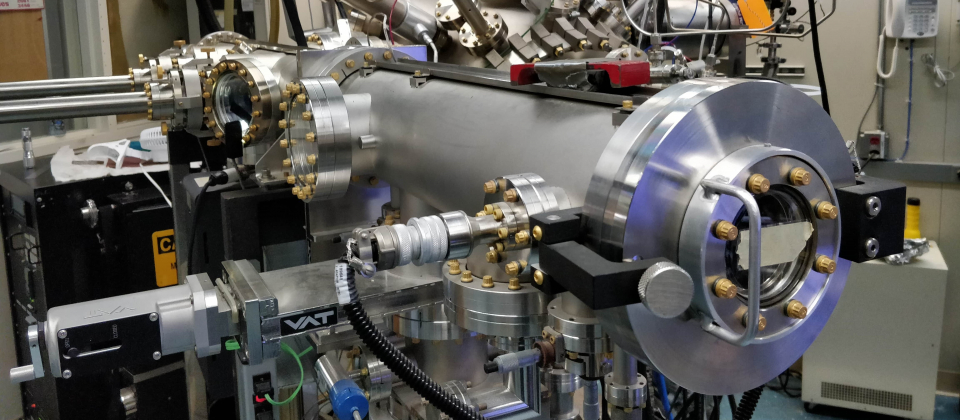MBE Growth of Nitrides
Most GaN-based semiconductors are grown by the outstanding technique: metalorganic chemical vapor deposition (MOCVD) - an area of great expertise at UCSB. We also have dedicated activities on molecular beam epitaxy (MBE) growth of group III nitrides. MBE offers the advantages of an ultrahigh purity environment, in situ characterization by techniques such as reflection high energy electron diffraction (RHEED) and line-of-sight mass desorption spectroscopy, low background concentrations of carbon and hydrogen. We currently have two dedicated nitride MBEs: one dedicated to growth with an rf-plasma source for nitrogen (plasma-assisted MBE – PAMBE)and the other with an ammonia (NH3) source for nitrogen.
Tunnel junctions
Since the MBE growth environment is nearly hydrogen-free, we can directly grow tunnel junctions on full LED epitaxial structures. Tunnel junctions enable new LED designs including replacement with p-contact transparent conducting oxides with n-GaN, multijunction LEDs and new flip chip designs. For a recent example of our work, see Yonkee et al., Appl. Phys. Lett. 109, 191104 (2016); doi: 10.1063/1.4967501 [link]
Visible emitters
So far, the quantum efficiency of MBE-grown LEDs has been poor due to high Shockley-Read-Hall (SRH) recombination. In this project, we are working to improve the growth conditions for InGaN quantum wells by PAMBE and NH3 MBE to realize high efficiency visible LEDs and laser diodes. For a recent example of our work related to identifying a key SRH center, see Young et al., Appl. Phys. Lett. 109, 212103 (2016); doi: 10.1063/1.4968586 [link].
UV emitters
The MBE work on UV emitters focuses on developing low threading dislocation density PAMBE AlN on SiC buffer layers, full LED structures, and high Al content tunnel junctions for improved light extraction. See more in the UV LEDs section.
Vertical transport
In recent years, we have worked extensively on vertical structures om GaN MBE including some of the first work to look at pn diode ideality [link] and the role of threading dislocations in vertical leakage in AlGaN/GaN heterotructures. More recently we have shown that the natural alloy disorder in AlGaN and InGaN alloys provides a very tortuous energy landscape that enables percolative transport [link, link]. We are now looking at the role of threading dislocations and impurities in diode ideality and breakdown in vertical pin diodes for power. We have also stated work on nonpolar GaN for intersubband structures [link here].














